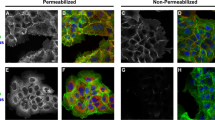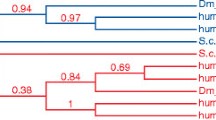Abstract
The pathophysiological functions of matriptase, a type 2 transmembrane serine protease, rely primarily on its enzymatic activity, which is under tight control through multiple mechanisms. Among those regulatory mechanisms, the control of zymogen activation is arguably the most important. Matriptase zymogen activation not only generates the mature active enzyme but also initiates suppressive mechanisms, such as rapid inhibition by HAI-1, and matriptase shedding. These tightly coupled events allow the potent matriptase tryptic activity to fulfill its biological functions at the same time as limiting undesired hazards. Matriptase is converted to the active enzyme via a process of autoactivation, in which the activational cleavage is thought to rely on the interactions of matriptase zymogen molecules and other as yet identified proteins. Matriptase autoactivation can occur spontaneously and is rapidly followed by the formation and then shedding of matriptase-HAI-1 complexes, resulting in the presence of relatively low levels of the complex on cells. Activation can also be induced by several non-protease factors, such as the exposure of cells to a mildly acidic buffer, which rapidly causes high-level matriptase zymogen activation in almost all cell lines tested. In the current study, the structural requirements for this acid-induced zymogen activation are compared with those required for spontaneous activation through a systematic analysis of the impact of 18 different mutations in various structural domains and motifs on matriptase zymogen activation. Our study reveals that both acid-induced matriptase activation and spontaneous activation depend on the maintenance of the structural integrity of the serine protease domain, non-catalytic domains, and posttranslational modifications. The common requirements of both modes of activation suggest that acid-induced matriptase activation may function as a physiological mechanism to induce pericellular proteolysis by accelerating matriptase autoactivation.






Similar content being viewed by others
References
List K, Haudenschild CC, Szabo R, Chen W, Wahl SM, Swaim W, Engelholm LH, Behrendt N, Bugge TH. Matriptase/MT-SP1 is required for postnatal survival, epidermal barrier function, hair follicle development, and thymic homeostasis. Oncogene. 2002;21:3765–79.
List K, Kosa P, Szabo R, Bey AL, Wang CB, Molinolo A, Bugge TH. Epithelial integrity is maintained by a matriptase-dependent proteolytic pathway. Am J Pathol. 2009;175:1453–63.
Kim MG, Chen C, Lyu MS, Cho EG, Park D, Kozak C, Schwartz RH. Cloning and chromosomal mapping of a gene isolated from thymic stromal cells encoding a new mouse type II membrane serine protease, epithin, containing four LDL receptor modules and two CUB domains. Immunogenetics. 1999;49:420–8.
Lin CY, Anders J, Johnson M, Sang QA, Dickson RB. Molecular cloning of cDNA for matriptase, a matrix-degrading serine protease with trypsin-like activity. J Biol Chem. 1999;274:18231–6.
Takeuchi T, Shuman MA, Craik CS. Reverse biochemistry: use of macromolecular protease inhibitors to dissect complex biological processes and identify a membrane-type serine protease in epithelial cancer and normal tissue. Proc Natl Acad Sci USA. 1999;96:11054–61.
Lin CY, Anders J, Johnson M, Dickson RB. Purification and characterization of a complex containing matriptase and a Kunitz-type serine protease inhibitor from human milk. J Biol Chem. 1999;274:18237–42.
Tseng IC, Chou FP, Su SF, Oberst M, Madayiputhiya N, Lee MS, Wang JK, Sloane DE, Johnson M, Lin CY. Purification from human milk of matriptase complexes with secreted serpins: mechanism for inhibition of matriptase other than HAI-1. Am J Physiol Cell Physiol. 2008;295:C423–C431431.
Wang JK, Lee MS, Tseng IC, Chou FP, Chen YW, Fulton A, Lee HS, Chen CJ, Johnson MD, Lin CY. Polarized epithelial cells secrete matriptase as a consequence of zymogen activation and HAI-1-mediated inhibition. Am J Physiol Cell Physiol. 2009;297:C459–C470470.
Lai CH, Lai YJ, Chou FP, Chang HD, Tseng CC, Johnson MD, Wang JK, Lin CY. Matriptase complexes and prostasin complexes with HAI-1 and HAI-2 in human milk: significant proteolysis in lactation. PLoS ONE. 2016;11:e0152904. https://doi.org/10.1371/journal.pone.0152904. (PONE-D-15-56176 [pii])
List K, Szabo R, Molinolo A, Sriuranpong V, Redeye V, Murdock T, Burke B, Nielsen BS, Gutkind JS, Bugge TH. Deregulated matriptase causes ras-independent multistage carcinogenesis and promotes ras-mediated malignant transformation. Genes Dev. 2005;19:1934–50.
Benaud C, Dickson RB, Lin CY. Regulation of the activity of matriptase on epithelial cell surfaces by a blood-derived factor. Eur J Biochem. 2001;268:1439–47.
Morgan PH, Robinson NC, Walsh KA, Neurath H. Inactivation of bovine trypsinogen and chymotrypsinogen by diisopropylphosphorofluoridate. Proc Natl Acad Sci USA. 1972;69:3312–6.
Kerr MA, Walsh KA, Neurath H. A proposal for the mechanism of chymotrypsinogen activation. Biochemistry. 1976;15:5566–70.
Friis S, Tadeo D, Le-Gall SM, Jurgensen HJ, Sales KU, Camerer E, Bugge TH. Matriptase zymogen supports epithelial development, homeostasis and regeneration. BMC Biol. 2017;15:46. https://doi.org/10.1186/s12915-017-0384-4.
Oberst MD, Williams CA, Dickson RB, Johnson MD, Lin CY. The activation of matriptase requires its noncatalytic domains, serine protease domain, and its cognate inhibitor. J Biol Chem. 2003;278:26773–9.
Benaud C, Oberst M, Hobson JP, Spiegel S, Dickson RB, Lin CY. Sphingosine 1-phosphate, present in serum-derived lipoproteins, activates matriptase. J Biol Chem. 2002;277:10539–46.
Lee M-S, Kiyomiya K, Benaud C, Dickson RB, Lin CY. Simultaneous activation and HAI-1-mediated inhibition of matriptase induced at activation foci in immortal human mammary epithelial cells. Am J Physiol Cell Physiol. 2005;288:C932–C941941.
Chen CJ, Wu BY, Tsao PI, Chen CY, Wu MH, Chan YL, Lee HS, Johnson MD, Eckert RL, Chen YW, Chou F, Wang JK, Lin CY. Increased matriptase zymogen activation in inflammatory skin disorders. Am J Physiol Cell Physiol. 2011;300:C406–415.
Wang JK, Teng IJ, Lo TJ, Moore S, Yeo YH, Teng YC, Kaul M, Chen CC, Zuo AH, Chou FP, Yang X, Tseng IC, Johnson MD, Lin CY. Matriptase autoactivation is tightly regulated by the cellular chemical environments. PLoS ONE. 2014;9:e93899. https://doi.org/10.1371/journal.pone.0093899.
Tseng IC, Xu H, Chou FP, Li G, Vazzano AP, Kao JP, Johnson MD, Lin CY. Matriptase activation, an early cellular response to acidosis. J Biol Chem. 2010;285:3261–70.
Chen YW, Xu Z, Baksh AN, Wang JK, Chen CY, Swanson R, Olson ST, Kataoka H, Johnson MD, Lin CY. Antithrombin regulates matriptase activity involved in plasmin generation, syndecan shedding, and HGF activation in keratinocytes. PLoS ONE. 2013;8:e62826.
Chen YW, Wang JK, Chou FP, Chen CY, Rorke EA, Chen LM, Chai KX, Eckert RL, Johnson MD, Lin CY. Regulation of the matriptase-prostasin cell surface proteolytic cascade by hepatocyte growth factor activator inhibitor-1 (HAI-1) during epidermal differentiation. J Biol Chem. 2010;285:31755–62.
Lee MS, Tseng IC, Wang Y, Kiyomiya K, Johnson MD, Dickson RB, Lin CY. Autoactivation of matriptase in vitro: requirement for biomembrane and LDL receptor domain. Am J Physiol Cell Physiol. 2007;293:C95–C105.
Inouye K, Yasumoto M, Tsuzuki S, Mochida S, Fushiki T. The optimal activity of a Pseudozymogen form of recombinant matriptase under the mildly acidic ph and low ionic strength conditions. J Biochem. 2009;147:485–92.
Tseng CC, Jia B, Barndt R, Gu Y, Chen CY, Tseng IC, Su SF, Wang JK, Johnson MD, Lin CY. Matriptase shedding is closely coupled with matriptase zymogen activation and requires de novo proteolytic cleavage likely involving its own activity. PLoS ONE. 2017;12:e0183507. https://doi.org/10.1371/journal.pone.0183507.
Oberst MD, Chen LY, Kiyomiya KI, Williams CA, Lee MS, Johnson MD, Dickson RB, Lin CY. Hepatocyte growth factor activator inhibitor 1 (HAI-1) regulates activation and expression of matriptase, a membrane-bound serine protease. Am J Physiol Cell Physiol. 2005;289:C462–C470470.
Chiu YL, Wu YY, Barndt RB, Yeo YH, Lin YW, Sytwo HP, Liu HC, Xu Y, Jia B, Wang JK, Johnson MD, Lin CY. Aberrant regulation favours matriptase proteolysis in neoplastic B-cells that co-express HAI-2. J Enzyme Inhib Med Chem. 2019;34:692–702. https://doi.org/10.1080/14756366.2019.1577831.
Shiao F, Liu LO, Huang N, Lai YJ, Barndt RJ, Tseng CC, Wang JK, Jia B, Johnson MD, Lin CY. Selective inhibition of prostasin in human enterocytes by the integral membrane kunitz-type serine protease inhibitor HAI-2. PLoS ONE. 2017;12:e0170944. https://doi.org/10.1371/journal.pone.0170944.
Basel-Vanagaite L, Attia R, Ishida-Yamamoto A, Rainshtein L, Ben AD, Lurie R, Pasmanik-Chor M, Indelman M, Zvulunov A, Saban S, Magal N, Sprecher E, Shohat M. Autosomal recessive ichthyosis with hypotrichosis caused by a mutation in ST14, encoding type II transmembrane serine protease matriptase. Am J Hum Genet. 2007;80:467–77.
Cho EG, Kim MG, Kim C, Kim SR, Seong IS, Chung C, Schwartz RH, Park D. N-terminal processing is essential for release of epithin, a mouse type II membrane serine protease. J Biol Chem. 2001;276:44581–9.
Desilets A, Beliveau F, Vandal G, McDuff FO, Lavigne P, Leduc R. Mutation G827R in matriptase causing autosomal recessive ichthyosis with hypotrichosis yields an inactive protease. J Biol Chem. 2008;283:10535–42.
Hedstrom L. Serine protease mechanism and specificity. Chem Rev. 2002;102:4501–24 (cr000033x [pii]).
Graf L, Jancso A, Szilagyi L, Hegyi G, Pinter K, Naray-Szabo G, Hepp J, Medzihradszky K, Rutter WJ. Electrostatic complementarity within the substrate-binding pocket of trypsin. Proc Natl Acad Sci USA. 1988;85:4961–5.
Szabo E, Bocskei Z, Naray-Szabo G, Graf L. The three-dimensional structure of Asp189Ser trypsin provides evidence for an inherent structural plasticity of the protease. Eur J Biochem. 1999;263:20–6 (ejb452 [pii]).
Lin CY, Wang JK, Torri J, Dou L, Sang QA, Dickson RB. Characterization of a novel, membrane-bound, 80-kDa matrix-degrading protease from human breast cancer cells. Monoclonal antibody production, isolation, and localization. J Biol Chem. 1997;272:9147–52.
Kiyomiya KI, Lee MS, Tseng IC, Zuo H, Barndt RJ, Johnson MD, Dickson RB, Lin CY. Matriptase activation and subsequent shedding with HAI-1 is induced by steroid sex hormones in human prostate cancer cells, but not in breast cancer cells. Am J Physiol Cell Physiol. 2006;291:C40–C4949.
Cheng TS, Chen WC, Lin YY, Tsai CH, Liao CI, Shyu HY, Ko CJ, Tzeng SF, Huang CY, Yang PC, Hsiao PW, Lee MS. Curcumin-targeting pericellular serine protease matriptase role in suppression of prostate cancer cell invasion, tumor growth, and metastasis. Cancer Prev Res (Phila). 2013;6:495–505. https://doi.org/10.1158/1940-6207.CAPR-12-0293-T(1940-6207.CAPR-12-0293-T [pii]).
Lee SP, Kao CY, Chang SC, Chiu YL, Chen YJ, Chen MG, Chang CC, Lin YW, Chiang CP, Wang JK, Lin CY, Johnson MD. Tissue distribution and subcellular localizations determine in vivo functional relationship among prostasin, matriptase, HAI-1, and HAI-2 in human skin. PLoS ONE. 2018;13:e0192632. https://doi.org/10.1371/journal.pone.0192632(PONE-D-17-32068[pii]).
Ko CJ, Huang CC, Lin HY, Juan CP, Lan SW, Shyu HY, Wu SR, Hsiao PW, Huang HP, Shun CT, Lee MS. Androgen-induced TMPRSS2 activates matriptase and promotes extracellular matrix degradation, prostate cancer cell invasion, tumor growth, and metastasis. Cancer Res. 2015;75:2949–60. https://doi.org/10.1158/0008-5472.CAN-14-3297(0008-5472.CAN-14-3297 [pii]).
Lee CF, Dang A, Hernandez E, Pong RC, Chen B, Sonavane R, Raj G, Kapur P, Lin HY, Wu SR, Ko CJ, Lo UG, Lee HY, Hsieh JT, Lee MS. Activation of sphingosine kinase by lipopolysaccharide promotes prostate cancer cell invasion and metastasis via SphK1/S1PR4/matriptase. Oncogene. 2019;38:5580–98. https://doi.org/10.1038/s41388-019-0833-3.
Acknowledgements
This study was supported by National Cancer Institute (NCI) Grant RO1 CA 123223 (to MDJ and CYL), and Grant (MAB-108-079) from the Ministry of National Defense Medical Affairs Bureau, Taiwan and Grants (CMNDMC10705; CMNDMC10813) from Chi-Mei Medical Center, Tainan, Taiwan (to J.-K. Wang). We also acknowledge the assistance provided by the Microscopy and Imaging Shared Resource and the Tissue Culture Shared Resource, which are supported in part by the Lombardi Comprehensive Cancer Center support grant (NIH/NCI grant P30-CA051008). The funders had no role in study design, data collection and analysis, decision to publish, or preparation of the manuscript.
Author information
Authors and Affiliations
Corresponding authors
Ethics declarations
Conflict of interest
CYL is an inventor on US patents #6,077,938 (Title: Monoclonal antibody to an 80-kDa protease) and #6,677,377 (Title: Structure based discovery of inhibitors of matriptase for the cancer diagnosis and therapy by detection and inhibition of matriptase activity) and MDJ and CYL are inventors on US patent #7,355,015 (Title: Matriptase, a serine protease and its applications). This does not alter our adherence to PLOS ONE policies on sharing data and materials.fficial views of the National Cancer Institute or the National Institutes of Health.
Additional information
Publisher's Note
Springer Nature remains neutral with regard to jurisdictional claims in published maps and institutional affiliations.
Dr. Bailing Jia has conducted most of the experiments in the current study.
Rights and permissions
About this article
Cite this article
Jia, B., Thompson, H.A., Barndt, R.B. et al. Mild acidity likely accelerates the physiological matriptase autoactivation process: a comparative study between spontaneous and acid-induced matriptase zymogen activation. Human Cell 33, 1068–1080 (2020). https://doi.org/10.1007/s13577-020-00410-1
Received:
Accepted:
Published:
Issue Date:
DOI: https://doi.org/10.1007/s13577-020-00410-1




